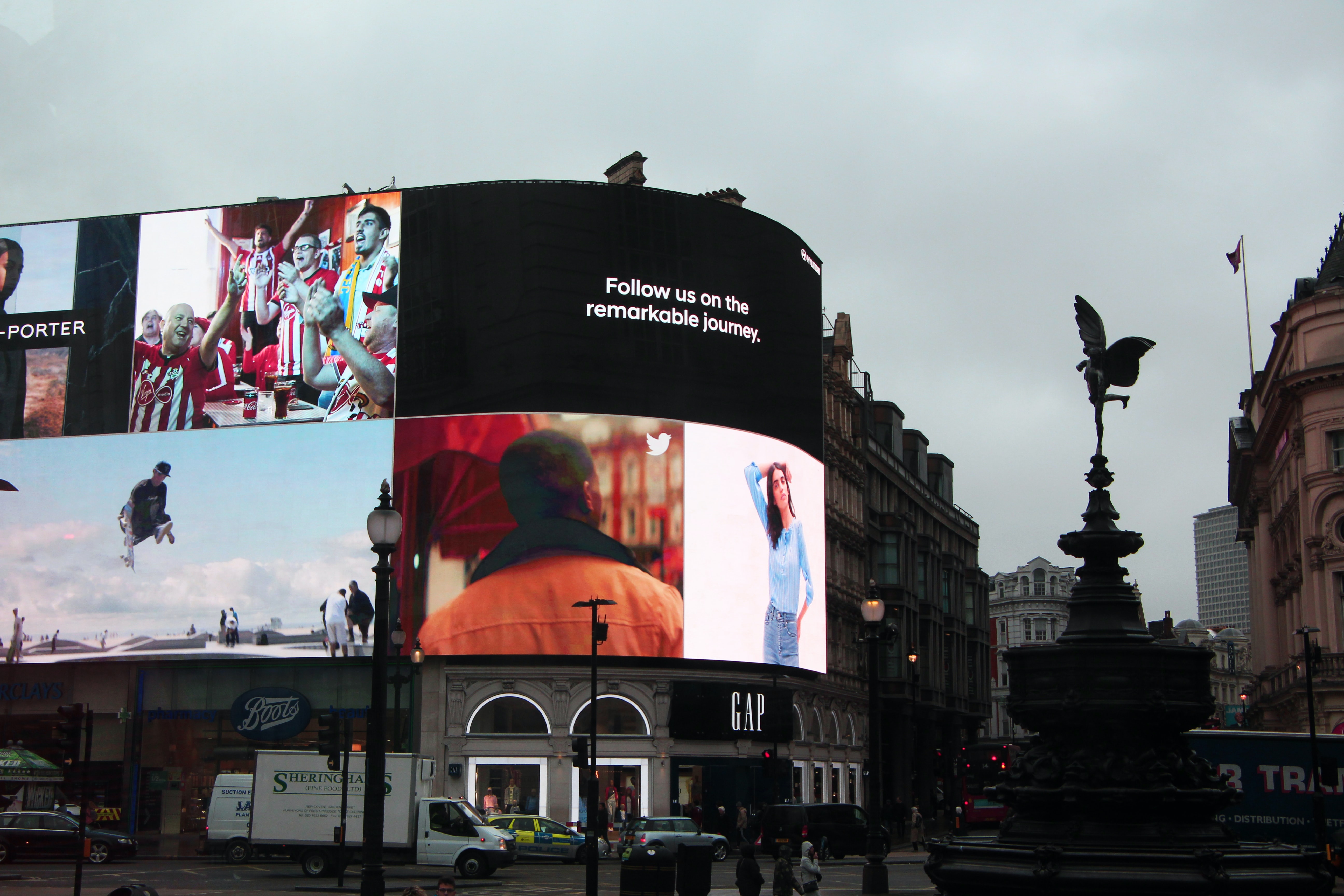Stop believing that old chestnut that half your ad spend is wasted. One of the world’s most widely held beliefs about advertising is based on a remark, allegedly made about a hundred years ago, by one or other of four men, none of whom may in fact have made it, and which, when examined, makes little sense.
Most people in Europe know that William Hesketh Lever (1851-1925), founder of Unilever and later the first Viscount Leverhulme, once said: 'I know that half the money I spend on advertising is wasted. My only problem is that I don’t know which half.'
Most people in the US know that John Wanamaker (1838-1922), department-store magnate, once said: “Half the money I spend on advertising is wasted; the trouble is, I don’t know which half.” Other people know that this remark was first uttered by Henry Ford; or if not him, then by JC Penney.
There are at least a dozen minor variations of this sentiment that are confidently quoted and variously attributed but they all have in common the words ‘advertising’, ‘half’ and ‘waste’. Google the line and you’ll get about nine million results.
And as long as you don’t think about it too carefully, it does seem to contain a kind of rustic wisdom – a bit like: 'There’s no smoke without fire.' As it happens, there’s little hard evidence that either William Lever or John Wanamaker (or indeed Ford or Penney) ever made such a remark. Certainly, neither the Wanamaker nor the Unilever archives contains any such reference. Yet for a hundred years or so, with no accredited source and no data to support it, this piece of folklore has survived and prospered. And it’s interesting to speculate why.
 People trot out sage old sayings to give specious credence to what they already think. 'There’s no smoke without fire' is a good example. It’s a way of saying: 'I know that technically he’s innocent until proven guilty but, well, where there’s smoke, you know…'
People trot out sage old sayings to give specious credence to what they already think. 'There’s no smoke without fire' is a good example. It’s a way of saying: 'I know that technically he’s innocent until proven guilty but, well, where there’s smoke, you know…'
So it seems more than likely that IKTHTMISOAIW has survived for so long not because it’s self-evidently true but because at least some people want it to be true; or at the very least, want it to contain a germ of truth.
Originally, this group would have included the ‘good wine needs no bush’ or ‘better mousetrap’ school of thought; those who firmly believed not only that good products sold themselves but also believed the apparent corollary: that products that were reduced to using advertising must almost, by definition, be of inferior quality. For fifty years or so, their patron saint was Milton S Hershey, who built the Hershey Bar into America’s best-selling candy with no significant help from advertising. 'What about Hershey, then?' was the triumphant challenge from advertising sceptics everywhere. When Mr Hershey’s successors experimented with advertising, they found that both sales and profitability went up substantially, at which point the sceptics grew strangely silent.
That a retailer should be credited with the belief is particularly odd. Retail advertising in the days of John Wanamaker was mostly placed in local newspapers and was mainly used to shift specific stock. An ad for neckties read: 'They’re not as good as they look, but they’re good enough. 25 cents.' The neckties sold out by closing time and so weren’t advertised again. Waste, zero.
Experiment was commonplace. Every element of an advertisement – size, headline, position in paper – was tested for efficacy and discarded if found wanting. Waste, if not eliminated, was ruthlessly hounded.
Claude Hopkins published Scientific Advertising in 1923, in which he writes: 'Advertising, once a gamble, has [become] one of the safest of business ventures. Certainly no other enterprise with comparable possibilities need involve so little risk.' Even allowing for adman’s exuberance, it strongly suggests that, within Wanamaker’s lifetime, there were very few advertisers who would have agreed that half their advertising money was wasted. However, the phrase ‘once a gamble’ is interesting. Perhaps in the very early years of the 20th century there had been enough truth in IKTHTMISOAIW for it to have found widespread agreement. But that was a hundred years ago.
Today, taken literally, it’s virtually meaningless. It’s difficult to spend the last half of your advertising budget without having spent the first half. So those who continue to quote it probably include CFOs engaged in hand-to-hand combat with their CMOs over next year’s marketing budget: 'Since we all know that half the money spent on advertising is wasted, Brendan, I take it you’d be perfectly happy with 50 per cent of what you’re asking for?'
More charitably, IKTHTMISOAIW probably still strikes a chord with those who worry about the apparent waste in the reach of mass media. There are few brands, however mass market, that can hope to appeal to everyone. An expensive television commercial for pet food or disposable nappies will be seen by millions who have neither dogs nor babies. Surely that’s waste?
In one sense, yes; but it’s been more and more widely recognised that targeting – which attempts to limit the exposure of advertising to those already or potentially in the market for any given product – may not be quite as efficient as it may seem. Or, to put it another way: what may seem at first glance to be waste may in commercial reality have a value.
A common attribute of all successful, massmarket, repeat-purchase consumer brands is a kind of fame. And the kind of fame they enjoy is not targeted, circumscribed fame but a curiously indiscriminate fame that transcends its particular market sector. Coca-Cola is not just a famous soft drink. Dove is not just a famous soap. Ford is not just a famous car manufacturer. In all these cases, their fame depends on their being known to just about everyone in the world: even if they neither buy nor use the brand. Show-biz publicists have understood this for ever. When the Beatles invaded America in 1964, their manager, Brian Epstein, didn’t arrange a series of targeted interviews in fan magazines; he brokered three appearances on The Ed Sullivan Show with an audience for each estimated at 70 million.
Far fewer than half of that 70 million will have subsequently bought a Beatles record or concert ticket, but it seems unlikely that Epstein thought this extended exposure was in any way wasted.
If the implication behind IKTHTMISOAIW was borne out in real life, it would seem reasonable to expect there to have been, in the course of the past hundred years, several cast-iron case studies of companies that had spent twice as much as they needed to on advertising and had suffered seriously as a result. There seems to be none. There are, of course, many examples of companies that have spent advertising money on inadequate products. That’s certainly wasteful – and not just half of it but all of it. There are also examples of brands being over-supported, often as part of deliberate media pressure tests to help arrive at something approaching the optimal level of support. It has never been easy to work out exactly how much is enough, and probably never will be. IKTHTMISOAIW implies, entirely without evidence, that 50 per cent of all advertising money – irrespective of role or medium – should never have been spent. And though no-one, of course, takes it literally, this sneaky suggestion, this ancient adage (‘No smoke without fire’) has been allowed to hang unchallenged in the air.
But does it really matter? Is it worth getting upset about? At one level, not in the least. Since IKTHTMISOAIW was first uttered (or not, as the case may be) the value of advertising has been put to the test, over and over again, in good times and bad, and its use continues. No advertiser spends money on advertising unthinkingly: it either earns its keep or it gets the elbow. If advertisers were offered the chance to be just as successful without it, they would snatch at it. And given modern measurements and the growth of digital channels, it’s easier than ever for advertising to be held accountable; to be seen to be more investment than cost.
And yet, and yet. It must surely also be true that the unthinking parroting of IKTHTMISOAIW over the years must, at some level of consciousness, have deterred competitive enterprises – whether brands, financial institutions or charities – from making more profitable use of this invigorating activity. And there must be many smaller companies, the ones on whom even large national economies depend, who could have been even more successful had they not been almost unconsciously discouraged from using advertising by nothing more than unfounded superstition. It’s probably too much to hope that IKTHTMISOAIW will ever meet the oblivion it deserves; but if we all join in, we can maybe start to make its perpetuators feel as ignorant as they are.
Read more from Jeremy in our Clubhouse. This article was taken from the June 2014 issue of Market Leader. Browse the archive here.
